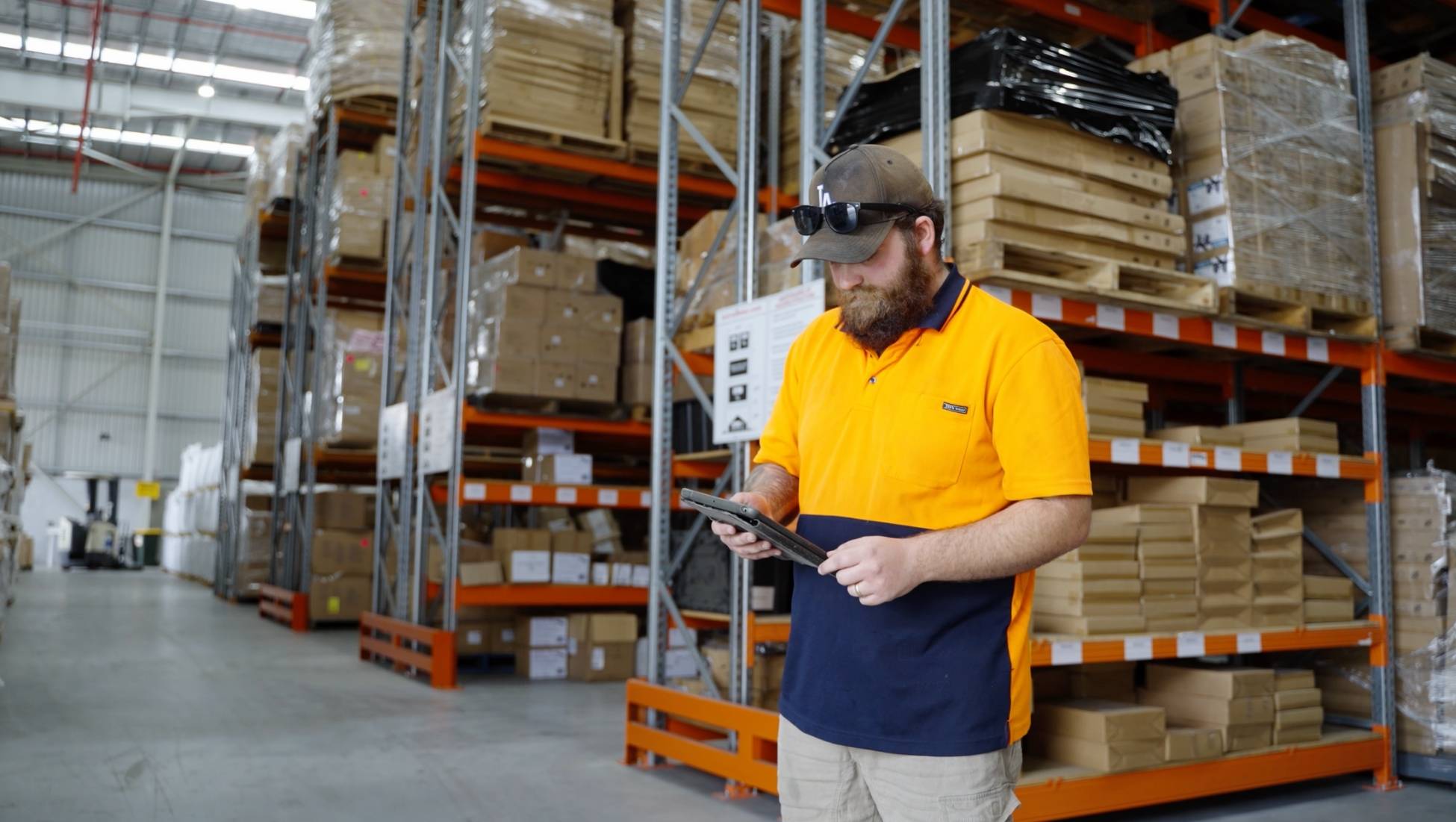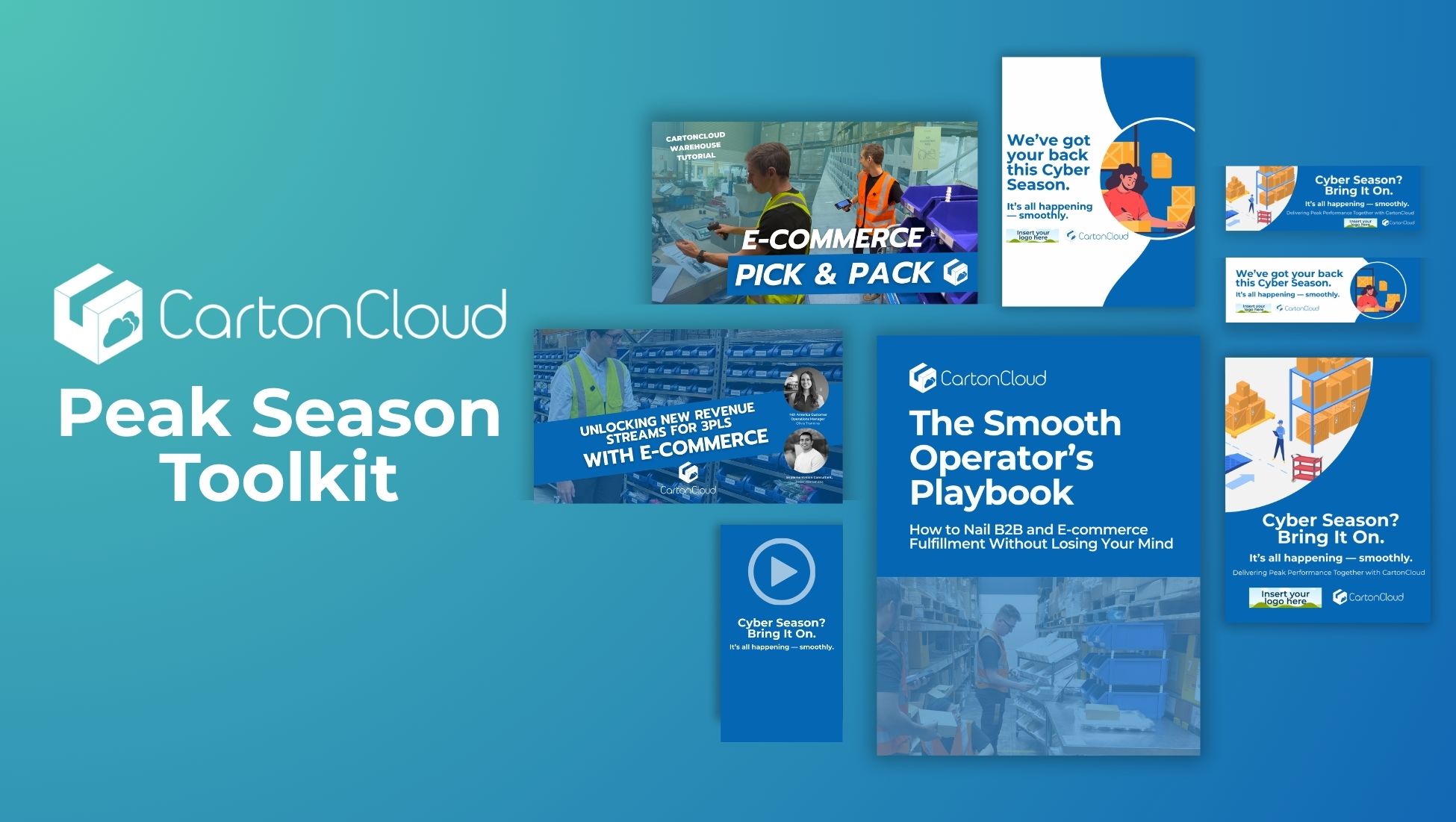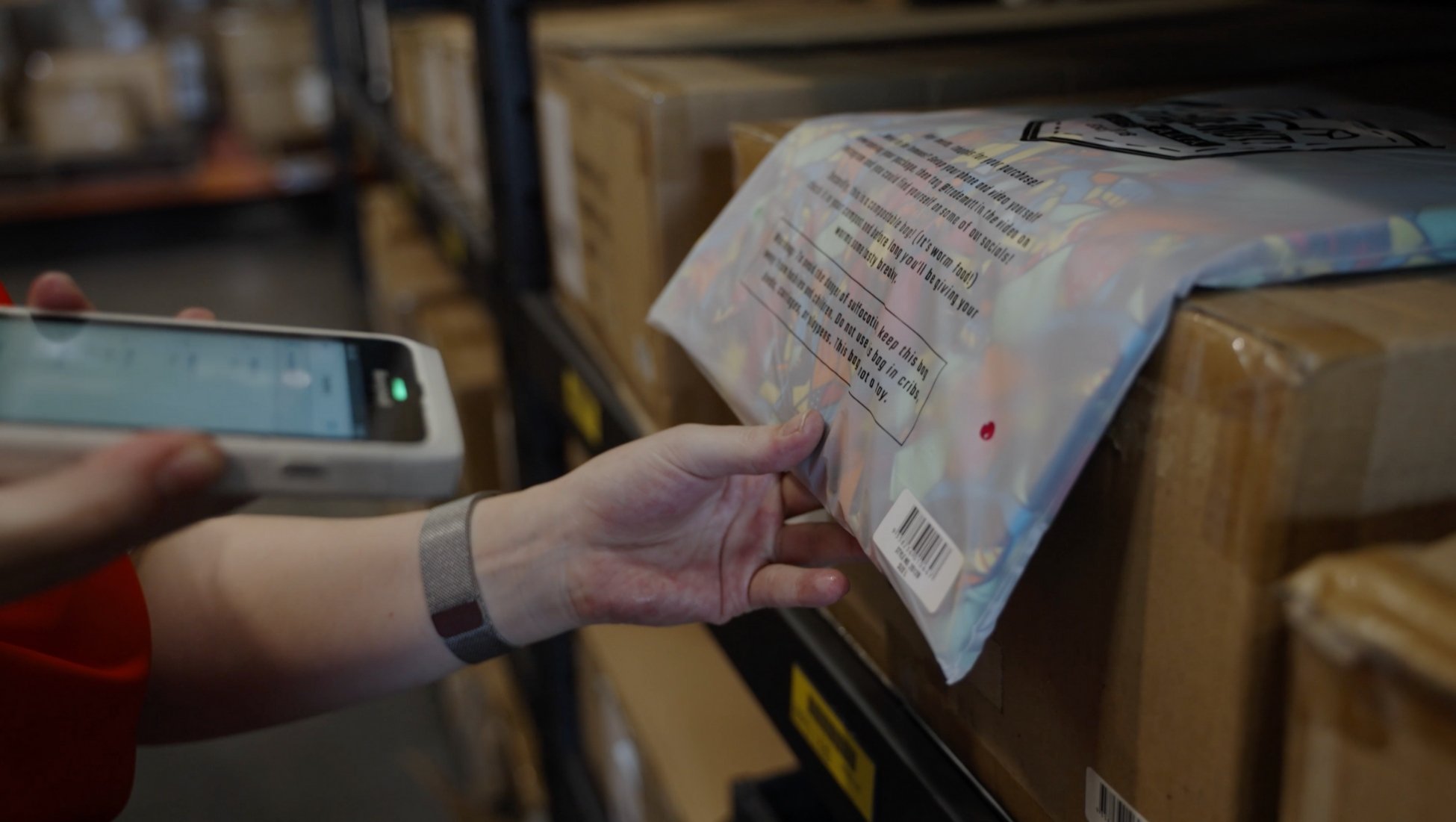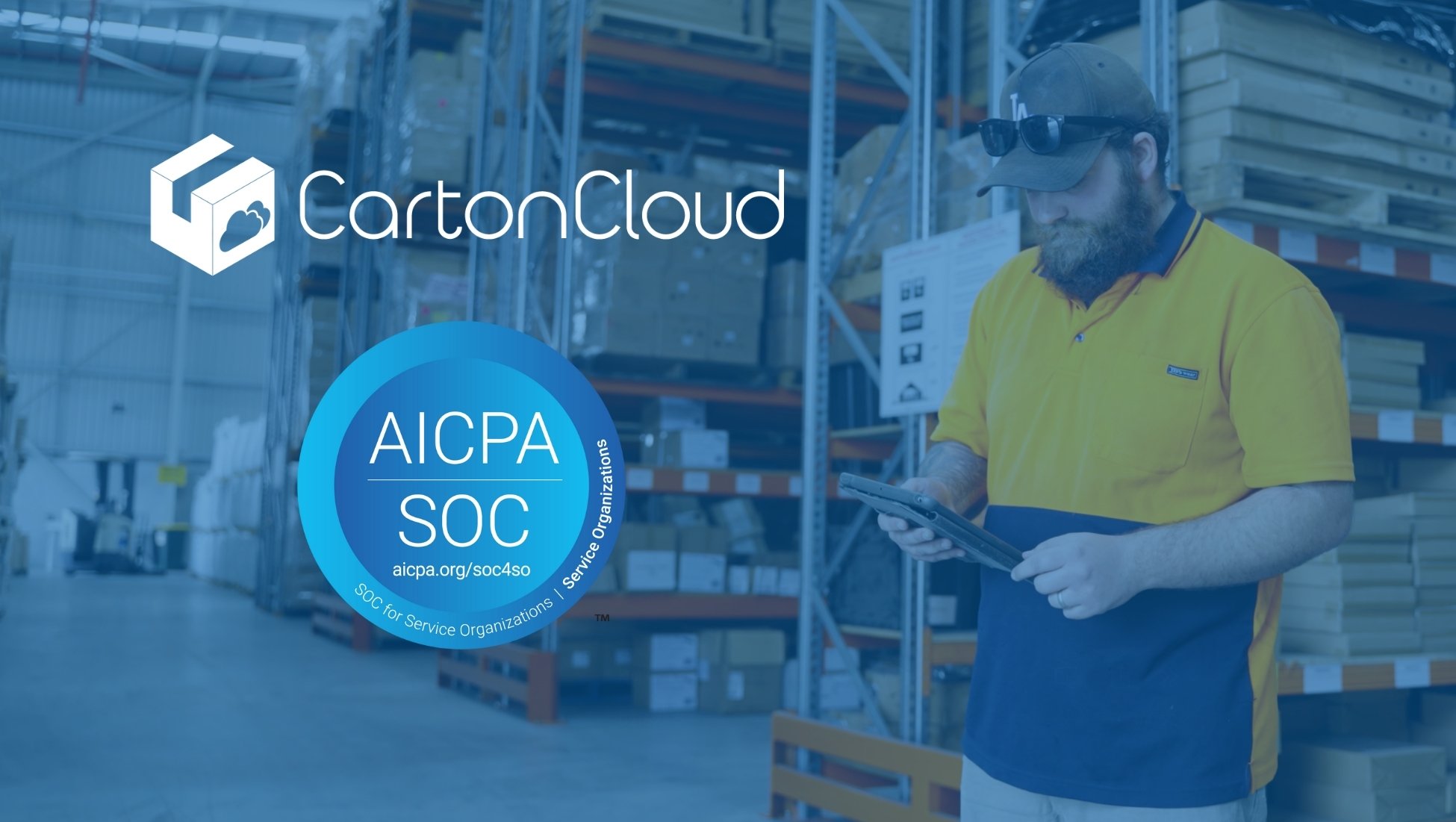Win the Right Customers by Locking in Your 3PL Niche

Here’s how to give your 3PL warehouse business direction and clarity, to set up for long-term success.
First: know who is your ideal customer.
Getting a clear idea on what you do best in your 3PL warehouse— and who you do it for — means you can tailor your services to deliver exactly what your customers need. Why? Because excellent customer service hinges on understanding their priorities and consistently meeting (or exceeding) their expectations.
Once you’ve nailed down your niche, you can make smarter decisions about;
- the customers you want to serve,
- the unique services you’ll offer (and how you’ll stand out from competitors),
- how to optimize your warehouse layout for their inventory and service needs,
- and importantly, how to choose the right tech and tools (like which logistics inventory management software) to be the foundation of your operation.
TL;DR: When your services and customers are locked in, you can customize your 3PL WMS to be the backbone of your operation — from effective logistics inventory management, to integrations, rate cards and automated workflows.
Tips & Advice for Starting Your Small Warehouse
First of all, you want to make sure you have the right logistics ordering and delivery software in place from day one! Discover how to set yours up the right way, with step-by-step tips from CartonCloud’s industry experts.
1. Define Your 3PL Service Speciality
Before you choose your racking or set up your packing workstation, take a step back and think about the needs of your customers. This might influence who you tailor your services to, and ultimately, should then help you to decide on things like your warehouse layout, your workflows, rates, and more.
Ask yourself; do you want to become the go-to warehouse for fast-moving e-commerce orders? Or do you see an opportunity in bulk storage, food and beverage distribution, or even managing high-value, serialized goods for specific industries?
Getting clear on your customer niche isn’t just about picking a market — it’s about shaping your entire business, from the layout of your warehouse to the logistics software features and workflows you’ll rely on every day.
Expert tip: “A clear service niche not only helps you stand out from the competition, but also guides every setup decision you make for your 3PL. Take time to research your local market and see where your warehouse can add value — look for service gaps, specialty storage needs, or where other local 3PLs aren’t delivering.” — Javier Hernandez, Implementation Consultant, CartonCloud
.gif)
2. Choose Your Ideal Warehouse Clients
To help you decide on your service niche, you can also look specifically at the type of clients or customers you want to serve.
Ask: Are you best suited for fast-paced online retailers who need frequent, smaller shipments? Or do you prefer working with manufacturers, wholesalers, or local businesses that require bulk storage or specialized handling?
When you target the customers that fit your strengths, you’re able to offer more reliable service and build strong business relationships. Rather than trying to be everything to everyone, you can focus on delivering what you do best — and earn loyal, long-term clients along the way.
Expert tip: “Take some time to really think about who your ‘dream clients’ are — not just the biggest names, but the businesses that truly fit your strengths and goals. You might find that small e-commerce brands with steady volume, local specialty producers, or clients needing extra care for their goods are an ideal fit as you start out.” — Javier Hernandez, Implementation Consultant, CartonCloud
Download our FREE guide to starting a small warehouse here to learn more about defining your ideal customer profile.

3. Decide What Inventory You’ll Handle
Whether you’re planning to handle just a few product types or a diverse range of inventory, being intentional about what you store and fulfill through your 3PL warehouse will make running your operation much easier as you grow.
Consider: Are you planning to handle large pallets, smaller cartons, temperature-controlled items, or e-commerce SKUs? Each inventory type comes with its own storage requirements, logistics inventory management processes, and even pricing models.
Knowing your ideal inventory helps you plan the right storage systems, avoid wasted space, and offer services that truly fit your customers’ needs. You can then tailor your warehouse space to suit the exact needs of your customers and set up tailored workflows for their inventory types. As your business grows, having flexible logistics inventory management means you can take on new types of products or add on additional services without needing to completely redesign your warehouse.
Expert tip: “Be sure to set your warehouse up with modularity in mind. What works for one client or product type might not work for another, so it’s important to leave room for your 3PL to grow and adapt.” — Olivia Trankina, North American Customer Operations Manager, CartonCloud
4. Build Your Tech Stack Early
Getting started with the right logistics ordering and delivery software is essential for any new 3PL business.
For Deanne Luke, getting onboard with third party logistics software was a decision she made early on knowing it would set her 3PL up for long-term success. By setting up the right systems from day one, she built a strong foundation for growth and ensured her 3PL was ready to support and welcome new clients with ease.
“We came onboard with CartonCloud when we were quite small. I probably only had 3 clients on board, but [CartonCloud] didn't see that as a problem — they just said ok, what can we do to set up some really good systems and processes now to enable you to bring on clients quicker and much more effectively in future.
By having CartonCloud come on board, it’s been one of the best moves that I could have made, and I don't think we would have won as much business as what we do.” — Deanne Luke, Founder of Lexington Logistics
A clear understanding of what is logistics management software and its capabilities will ensure you select the best fit for your growing operations. By choosing third party logistics software like CartonCloud’s WMS, you’ll be able to automate daily tasks and reduce manual admin which makes it much easier to take on new clients.
“Many new 3PLs start out using spreadsheets to manage orders, inventory, and billing — often because they’re still figuring out what is logistics management software and how it can actually help their business. But as operations grow, manual processes quickly become time consuming and error prone. Getting a WMS in place early provides a strong foundation for accurate, streamlined workflows — giving you the tools to scale faster and more efficiently.” — Ryan Hwang, North American Sales Manager, CartonCloud
Here are a few ways CartonCloud’s WMS can help you set up a warehouse that’s ready for success.
- Streamline all your entire operation: Keep orders moving seamlessly from picking and packing to dispatch and invoicing — all tracked in one place, so nothing gets missed.
- Ensure accuracy: Real-time updates and barcode scanning help your team manage every detail and reduce costly errors.
- Securely store customer data and rate cards: Manage all your client contacts, agreements, and rate cards in one place for fast, accurate invoicing.
- Track inventory at every stage: Instantly view stock levels, deliveries, and outgoing orders — taking the guesswork out of your inventory management.
- Automate admin and billing: Automatically generate your invoices as jobs are completed, saving your team 8 hours each week on admin.
- Enhance customer service: Give your clients access to their own customer portal, where they can check inventory, enter orders, and get real-time updates.
Want to learn more? See the top 5 ways logistics software levels up your business here.
5. Plan Your Physical Space & Layout for Everyday Efficiency
Ok, you now have your ideal customer profile, inventory, and workflow requirements clear, so now you can start planning your physical space to optimize these operations.
When you’re starting out, it’s tempting to line the walls with racks and start stacking pallets right away, however, it’s worth spending a small amount of time now, to design a layout that’s optimized for your operations, to save you huge amounts of time later on. .
Here’s a few tips;
- Consider how stock will arrive, where you’ll store them, and the most efficient way to handle picking, packing, and shipping.
- Creating clear, dedicated zones helps keep your warehouse organized — and the smartest layouts also leave a bit of extra space to expand as your business grows.
Expert tip: “The goal when setting up your warehouse space is to create a flow that feels natural and eliminates unnecessary steps. I’d recommend drawing a rough floor plan including receiving, storage, picking, packing, and shipping areas — then walk through it as if you’re handling an order to spot any bottlenecks.” — Scott Murray, Vice President of Operations, CartonCloud
Download part 2 in our “How to Start a 3PL Warehouse Business” series to learn more about how to set up your physical warehouse space.
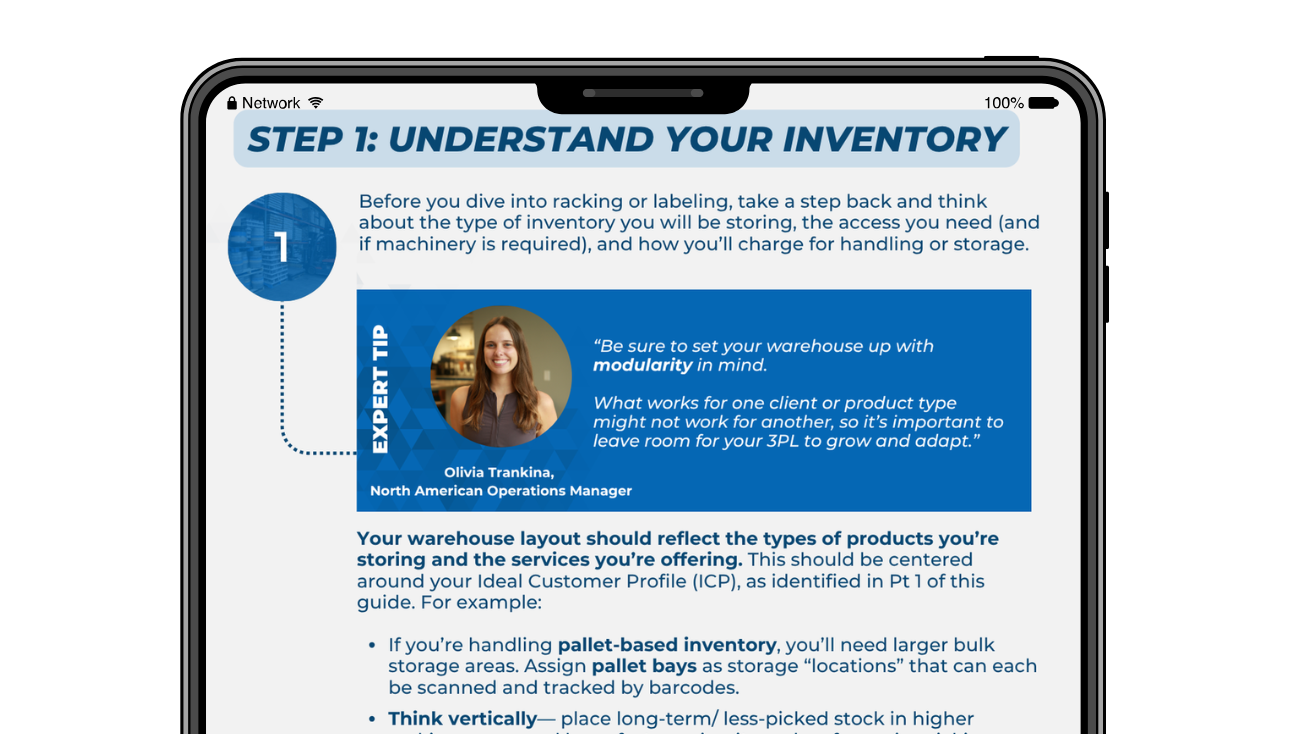
Key Takeaways for Starting a Small Warehouse
- When starting a 3PL warehouse, choose customers and inventory types that play to your strengths.
- Design your warehouse for efficiency and growth, by planning clear zones for receiving, storage, picking, and packing.
- Automate your operations early with a clear understanding of what is logistics management software and how a logistics ordering and deliver software can streamline admin, reduce manual errors, and boost efficiency.
Q: What is logistics management software and why do I need it?
A: If you’re new to the industry, you might wonder, “what is logistics management software and why do I need one from the start?” There are many different types of logistics software solutions, including warehouse management, inventory management, transport and more. Ultimately, as a small warehouse starting out, you want to look for a third party logistics software solution that brings all your operational tasks — order picking, logistics inventory management, dispatching, billing, and more — so you can easily manage and run your entire 3PL from one platform.
Instead of juggling spreadsheets or switching between multiple programs, you can avoid costly errors, save hours of admin, and scale your business smoothly as your order volumes and number of clients increase. Learn more about what is logistics management software and how to find the best one for your business here.
Q: Where is logistics software used?
A: When you’re starting a warehouse business, understanding what is logistics management software and where you can use it is key to setting up your unique service offerings.
There are a number of areas of your business where an integrated warehouse management and transportation management system like CartonCloud is ideal. For example, you can use your third party logistics software for:
- Warehousing: Stay on top of inventory, picking, packing, and dispatch with automated workflows — all in one place to avoid errors and stay efficient, even as orders pick up.
- Distribution: Easily manage inbound and outbound freight, build run sheets and keep customers updated on order status.
- Cross Docking: Instantly scan and sort incoming freight, so you can quickly match goods to outgoing deliveries and keep things moving fast.
- Transport: Assign drivers, optimize driver routes, and track deliveries in real time from your dashboard, so you’re always in control — even with a small team.
- Last Mile: Track every delivery right to your customer’s door, automate consignment allocations, capture electronic proof of deliveries, fuel levies and ad hoc charges.
Q: How do I start a warehouse business?
A: Starting a warehouse business takes careful planning, but breaking it into manageable steps makes the process much easier! There are several key things you should be determining as you begin to launch, such as:
- Your ideal customer base.
- What inventory types you will be storing.
- What is logistics management software (and how to use it to manage your operation).
- How you will set up your physical warehouse space.
By having a solid plan in place, you’ll be ready to hit the ground running with a reliable service offering for your clients from the start. We’ve created a helpful guide to simplify your set up, check out our guide to start a small warehouse business here.
Ready to Start Your 3PL Warehouse Business?
Find out more about what is logistics management software and how it can take your business to the next level. Book your free demo and see how CartonCloud’s third party logistics software helps new warehouses launch with confidence — and supports ongoing growth at every stage.
Subscribe to CartonCloud


